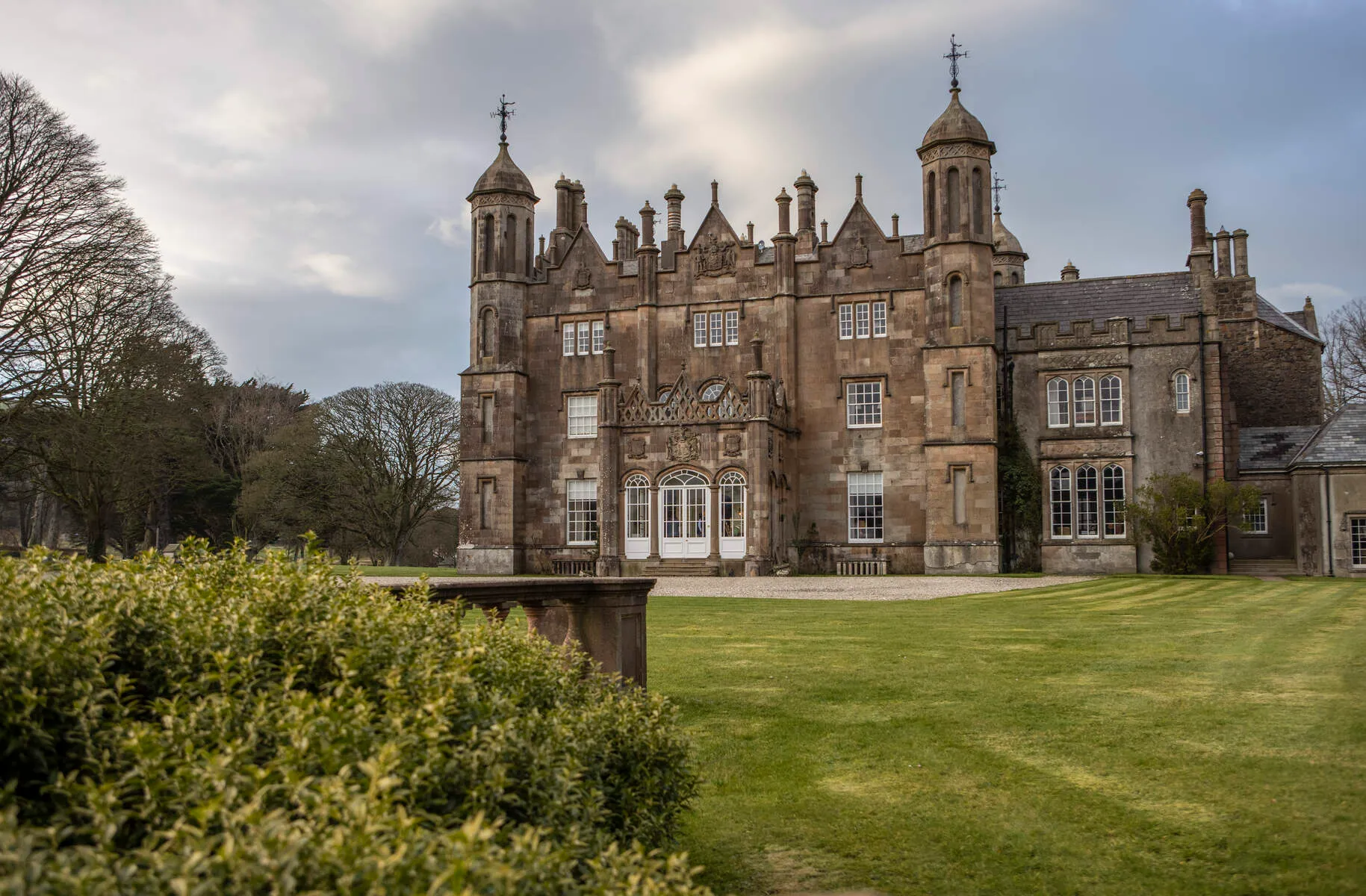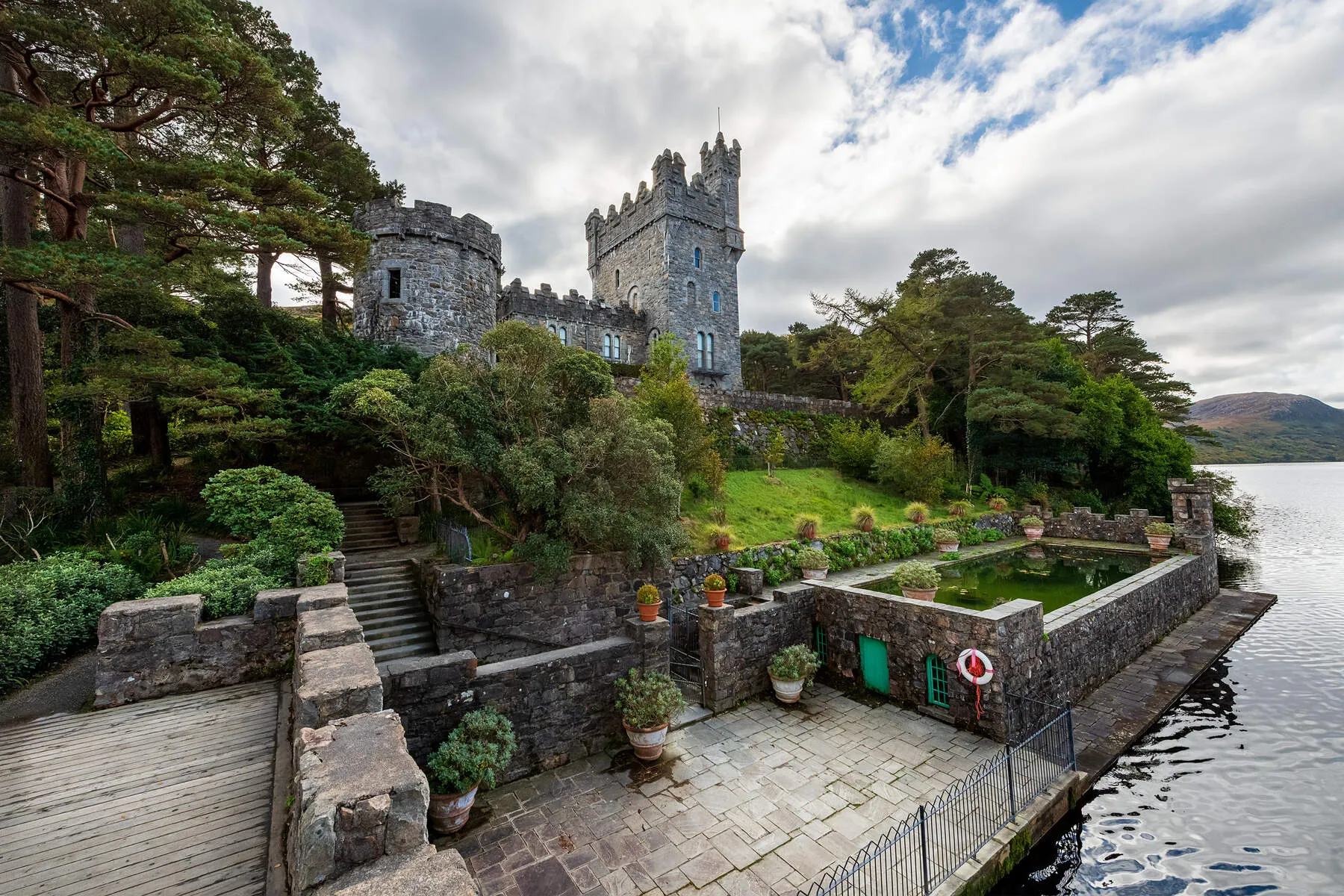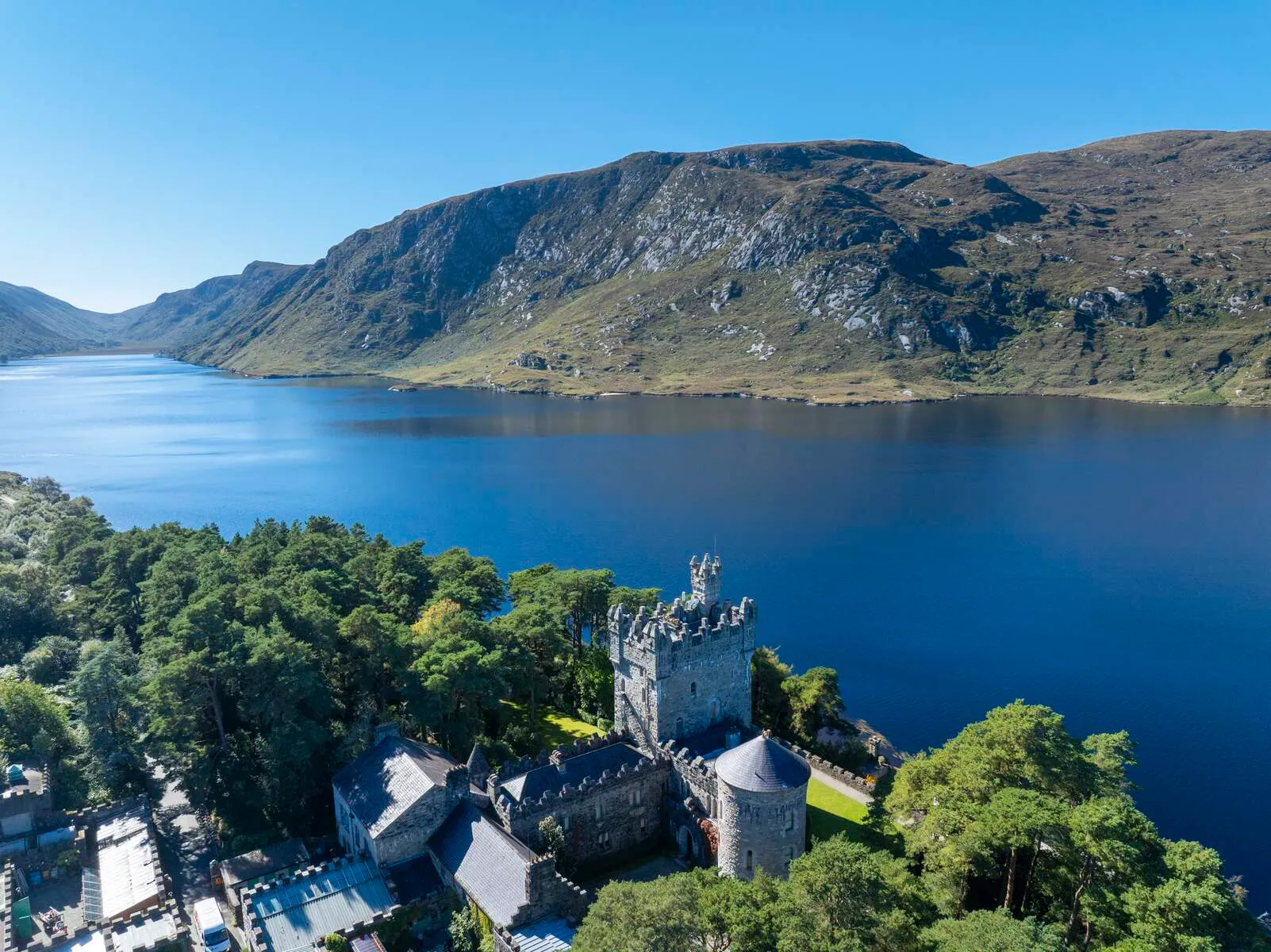Glenveagh National Park rises from the raw beauty of County Donegal's Derryveagh Mountains, where mist-cloaked peaks plunge into glacial lakes and ancient forests whisper stories of centuries past. This rugged landscape cradles Ireland's second-largest national park - a place where untamed wilderness meets Victorian grandeur at Glenveagh Castle. Perched on the edge of Lough Veagh, the castle's turrets pierce the sky like a sentinel guarding Donegal's wild heart. Here, herds of 600 red deer roam freely - the largest such group in Ireland - while golden eagles, once extinct here, now soar over mountains that include Errigal (752m), a Munro for Irish hikers. The park's magic lies not just in its scale (16,000 hectares of boglands and woodlands) but in contrasts: the manicured Italianate gardens bursting with exotic rhododendrons contrast sharply with the untamed "Poisoned Glen" below, a place where legend says wolves once roamed.
For visitors, Glenveagh offers adventures layered like its history. Stroll the castle's walled gardens, where frost-defying plants from Chile and Madeira thrive beside a Gothic orangery, then hike into the mountains via trails like the Glen Walk - a wild journey through oak forests and waterfalls accessible by weekend shuttle bus. Don't miss the chance to glimpse golden eagles or spot red deer during their autumn rut. Whether you're cycling forest paths on an electric bike, picnicking lakeside as stoats dart through heather, or joining a guided walk decoding ancient stone walls, Glenveagh rewards curiosity with views that stretch from Donegal Bay to distant mountains. This is a park where every season - whether the heather's purple bloom in summer or winter's stark beauty - invites you back. Come for the castle; stay for the wildness that shaped it.
Jump to section:
Things to See and Do

Glenveagh Castle
A 19th-century castellated mansion built between 1867-1873 showcasing Victorian-era grandeur. Guided tours explore its original furnishings and art collection with views of Lough Veagh. Tours run daily (except Wednesdays) until 4:45pm.
Golden Eagle Reintroduction Project
Observe rare golden eagles in their natural habitat through park displays and guided walks. Learn about conservation efforts at the Visitor Centre exhibitions.

Gardens of Glenveagh Castle
150-acre gardens with exotic plants from Chile, Madeira & Tasmania. Features rhododendrons, a Gothic Orangery, and self-guided trails through rare species in conserved areas.
Lough Veagh
A glacial lake surrounded by mountains offering fishing permits (July-Sept) and scenic walking trails like the Lakeside Walk. Home to red deer herds.
Glen Walk
8km trail through native oak woodlands with historic settlements, waterfalls, and views of Errigal Mountain. Accessible via Trail Walker Bus on weekends.
Lough Insagh Walk
4km trail around a secluded glacial lake with dramatic views of the Poisoned Glen and ancient stone walls. Reached by Trail Walker Bus drop-off points.
Glenveagh National Park Visitor Centre
Start here for guided maps, golden eagle exhibits, and park history displays. Features a seasonal restaurant (Easter-Sep), bike rentals, and shuttle tickets.
Grass Routes Bike Hire
Rent electric/hybrid bikes to explore forest paths and lakeshores at your own pace. Located near the Visitor Centre bus shelter.
Derrylahan Nature Trail
2km family-friendly loop introducing Glenveagh's ecology through wildlife signage and bogland landscapes near the Visitor Centre.
Viewpoint Trail
1km circular path from the castle offering panoramic views of Lough Veagh, Derryveagh Mountains, and castle grounds.
Wild Camping & Red Deer Watching
Remote tent stays following the Wild Camping Code with opportunities to observe red deer rutting season (mid-Sept to mid-Nov) from safe distances.
Seasonal Guided Walks
Ranger-led programs focusing on flora, fauna, and cultural history. Themed events run throughout the year – check Visitor Centre schedules.
Castle Tea Rooms
Homemade cakes, soups & light meals served in a courtyard overlooking gardens. Open daily with seasonal specialties (10am-4pm winter hours).
Getting There
By Car
To get to Glenveagh National Park by car, take the N56 road through Kilmacrennan, then turn left onto the Gweedore Road R255. The park is located 24km north-west of Letterkenny. From Donegal Town, it's approximately 25 km (15.5 miles), a 30-40 minute drive. From Dublin, the drive takes around 3 hours and 30 minutes.
By Bus
The TFI Local Link 971 bus goes from Letterkenny to Glenveagh National Park, stopping right at the entrance to the visitor's centre (40 minutes, up to four times a day). The Local link bus service number 271 Burtonport – Letterkenny also passes through Glenveagh daily. You can pick up the bus at the flagpole in the Car Park.
By Air
The nearest airport is Donegal Airport (CFN), but you'll need to rent a car or take public transportation from there to get to the park. Dublin Airport (DUB) is another option, with a drive of around 3-4 hours to the park.
Local Transportation
Once inside the park, you can walk, bike, or take a shuttle bus to get around. The shuttle bus travels between the visitor's centre and the castle throughout the day, taking you on a scenic little road that meanders around the edge of the lake. You can also rent a bike (or an e-bike) from Grass Routes, right by the shuttle bus stop.
Events & Festivals 2025
There are currently no events listed. If you would like to add an event, please contact us.
History
Glenveagh National Park's history is intertwined with that of its centerpiece, Glenveagh Castle, a late 19th-century castellated mansion built between 1867 and 1873 by Captain John George Adair. Adair, a member of the landed gentry who amassed his fortune through land speculation in the United States, envisioned an estate that would surpass the grandeur of Balmoral, Queen Victoria's Scottish retreat. The castle's design, inspired by the Scottish baronial style, was meant to evoke the romanticism and majesty associated with such estates.
Adair's legacy is complex, marked by both significant achievement and controversy, particularly the Derryveagh Evictions of 1861, in which 224 tenants were forcibly removed from their homes to improve the aesthetic appeal of the estate. This event left an indelible mark on Adair's reputation and local perceptions of him.
Following Adair's death in 1885, his widow Cornelia took over the management of Glenveagh Castle and its estate. She brought a more benevolent approach, focusing on improving living conditions for the staff and fostering good relations with the local community. Under her guidance, the castle's gardens were further developed, introducing new plant species and emphasizing the integration of the gardens with the natural beauty of Donegal.
In 1929, Arthur Kingsley Porter, a Harvard University professor with a deep interest in art and architecture, acquired Glenveagh Castle. Porter's tenure was marked by his scholarly work on Irish archaeology and culture, as well as his efforts to restore and preserve the castle's architectural integrity.
The castle's next owner, Henry McIlhenny, an Irish-American with a background in art and entrepreneurship, purchased Glenveagh in 1937. McIlhenny transformed the estate into a hub of high society, hosting illustrious guests like Greta Garbo and Marilyn Monroe. He also revolutionized the gardens, introducing exotic plants from around the world and creating a haven for horticulturalists and nature enthusiasts.
McIlhenny's decision to transfer Glenveagh Castle and its lands to the Irish state in 1983 marked a significant turning point in the estate's history. The establishment of Glenveagh National Park ensured the preservation of the area's natural and cultural heritage, making it accessible to the public for the first time.
Today, visitors can explore the castle and its gardens through guided tours, discovering the intricate history and beauty of this unique estate. The park itself offers a striking contrast between the wild landscape of the Derryveagh Mountains and the manicured gardens of Glenveagh Castle. With its diverse wildlife, including red deer and golden eagles, and its commitment to conservation, Glenveagh National Park stands as a testament to Ireland's dedication to preserving its natural and cultural treasures for future generations.
